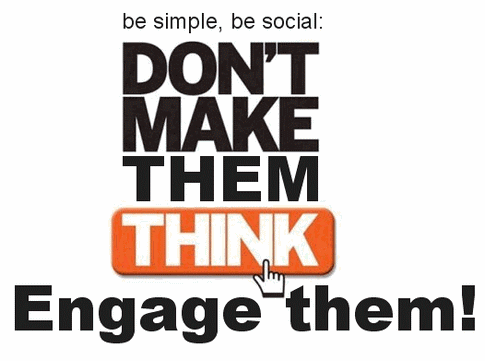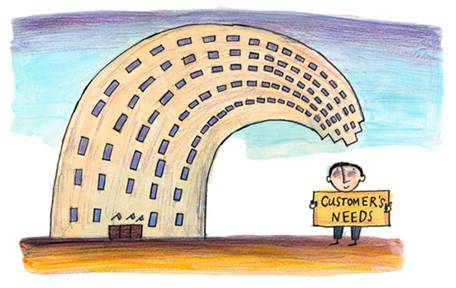5 Ways to Use Images to Drive More Traffic
Let’s drop the cliché (the one with 1000 words) and put it this way, an image can say a lot more than you want to convey to your website visitors. How many people out there would love to read oodles of text endlessly and not get bored? A very well-written page is sort of incomplete without a communicative, gripping picture to go along. An expressive image performs three very important actions:
- It connects with the reader
- It engages them
- Propels them to read further
Isn’t that exactly what you’d want for your website?
So let’s talk about ways to use images to drive more traffic.
Rule # 1 Use Images for Your Reader to Drive More Traffic
- Target the audience directly. Avoid posting random images. Think from the reader’s perspective and post what they would like to see and that they could relate to. If you create or market beautiful home interiors, include pictures which would attract both men and women, as they perceive images differently. Generally, men are the more practical ones and most women connect with the emotional aspect of most of the things.
- Include sizable pictures. Tiny pictures are as good as no good. So include moderately sized images or if necessary large pictures to attract viewers and keep them hooked. Check out the VW bus event company’s website and see how engaging large pictures can be.
- Go for Live Images. Images that have direct eye contact with your reader have a huge impact, a lot more than an abstract image.
- Use clear and quality images. Of course! Who would enjoy looking at a blurred or unclear image and continue to stay on the webpage. Get best images for your website for optimizing conversion rates.
Rule # 2 to Drive More Traffic – Turn your images SEO friendly
Isn’t SEO the God of online marketing? We all turn miniscule in view of the immense power of SEO. Let’s waste no time and get friendlier with it!
- Keep file size small You do not want to turn away visitors because your images take forever to load, do you? Achieve ideal image compression to keep the interest intact.
- Use fewer images per page to avoid unnecessary congestion. Readers will also feel bogged down if they see too many images at once.
- Consider getting a landing page for each image with unique information pertaining to each image. This will give you a chance to enable interaction with viewers by allowing them to rate or comment on it.
- Give images informative names. Also, powerful alt text is preferred by search engines because it serves as important information for people who use screen readers, who have visual anomalies and those with slow internet speeds.
- Use keywords in correct context This enables the search engine to return an appropriate image in response to a user’s inquiry.
An efficient SEO plugin to create SEO compatible images for your website is all you need to optimize your website for search engines.
Rule # 3 to Drive More Traffic – Get Social Networking Sites Working for You
We all know the spread and reach of social media on the internet today. If you are famous on social networking sites, you are famous. Additionally, propagating your work via social media is a low-cost method to achieve high returns on investment. One of the ways you can achieve this is through images.
- Get really catchy images so that the visitor on your website cannot restrain from sharing it via social networking.
- Use standard formatting types like TIFF, .jpg, .png or .gif which are most widely accepted and compatible with most devices.
- Post images on your blog if you run one or are associated with one and share it on all possible forms of social media to increase the chances of reaching larger number of people.
Rule # 4 to Drive More Traffic – Keep Your Image Fresh, Usable and Matching Content
Make sure people relate to your image almost immediately. Let your image ooze a fresh feel. Make your image usable so that when people click on it, they can reach your site.
- Upload images periodically because the newness of the image does impact its rankings with search engines.
- Ascertain usability When a person clicks a link to view the image you uploaded, they must reach your website, instead of getting a ‘click to view larger picture’ message.
- Relevant Content is a must within the image keywords, URL, captions; to align with the text on the webpage for the search engines to believe you are a non-spammer.
Rule # 5 to Drive More Traffic – Optimize File Names and Alt Text
- Appropriate keywords in the file name of your images are a must, exactly like those in URLs for content.
- Prominent search engines recommend saving similar images in a unique folder rather than randomly scattering them.
- Exceptional Alt attribute for your images is another plus point for your website to be popular with search engines. Instead of stuffing it with random keywords or nothing at all, create it to give constructive information about the description of the image.
We all know how difficult it is to survive tough competition and stay among the frontrunners. Using images optimally, for both the kings, the customer and SEO, is one of the easiest and doable ways you can use to boost your profits on a large scale and gain an edge over competition.
Customer is King
I would recommend you to check whether your images are SEO ready and better the chances of conversions. These handy and useful tips will ensure you go a long way in optimizing images for a successful website and hence an enhanced success rate for your business. There are a multitude of plugins and tools you can put to use to make your images ready to drive more traffic to your site. Of course, you will have to be a little time-tolerant for the results to be visible.
Have you already implemented similar image optimization strategies and techniques and seen wonderful results? Share with us and let’s discuss the possibility of discovering better ideas.






Prеtty nice ρoѕt. I јust ѕtumbled upon youг
blog and wanted to sаy that I haνе really enjoyed broωѕіng your blog
poѕts. In any сase І’ll be subscribing on your rss feed and I am hoping you write once more very soon!